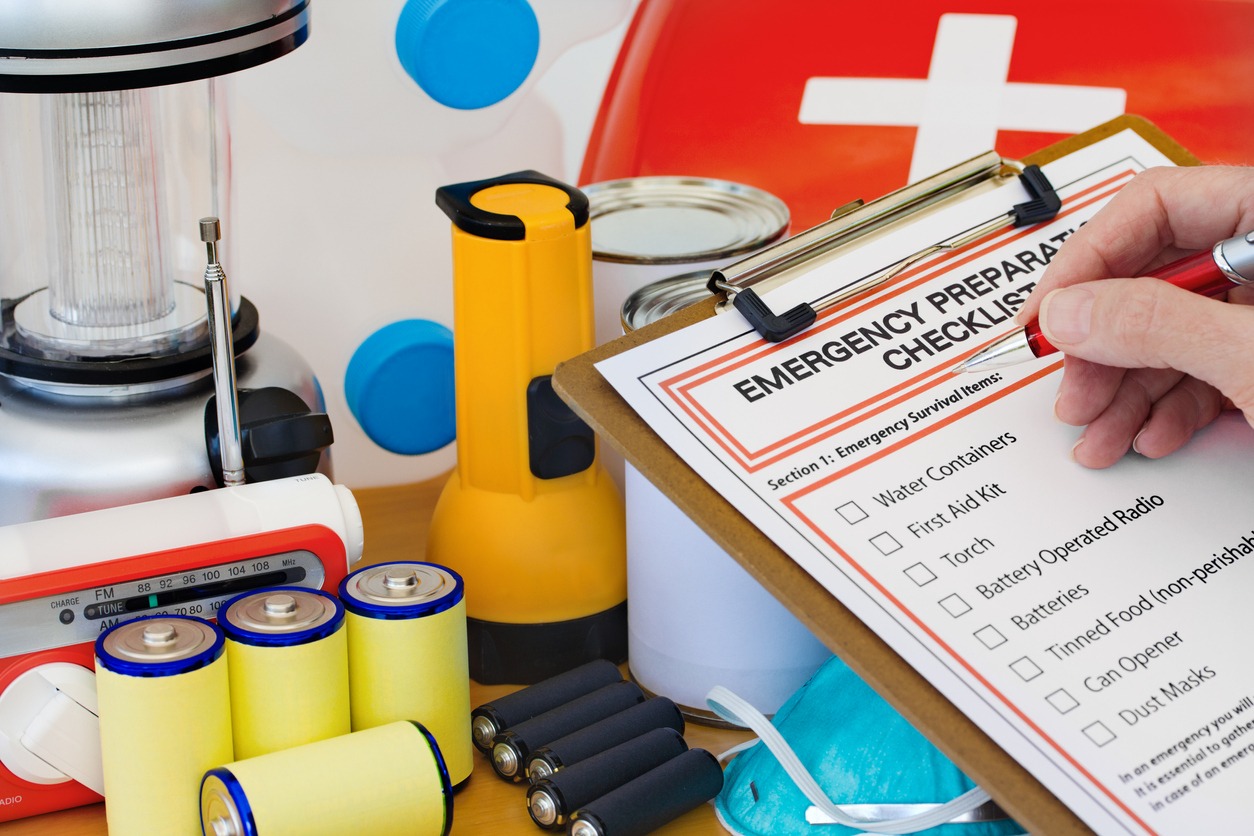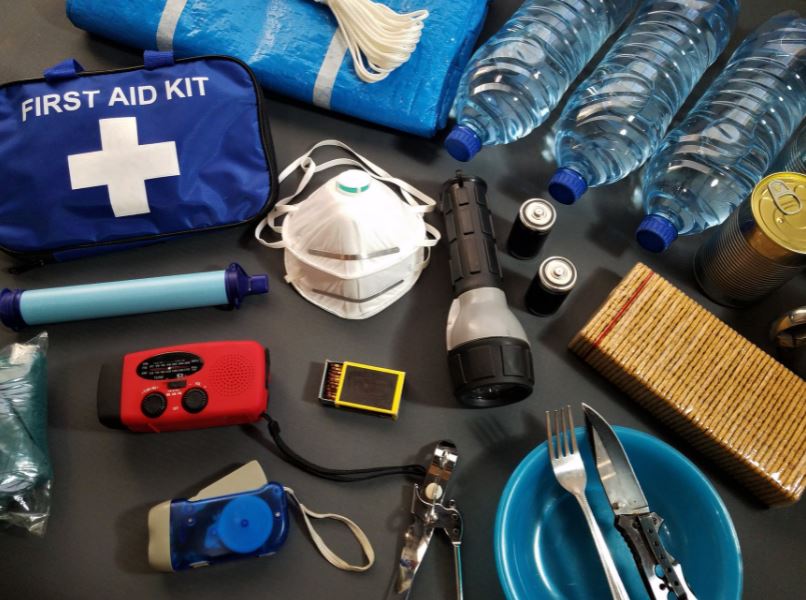SHTF Gear and Supplies To Survive TEOTWAWKI: Essential Tools for Preparedness
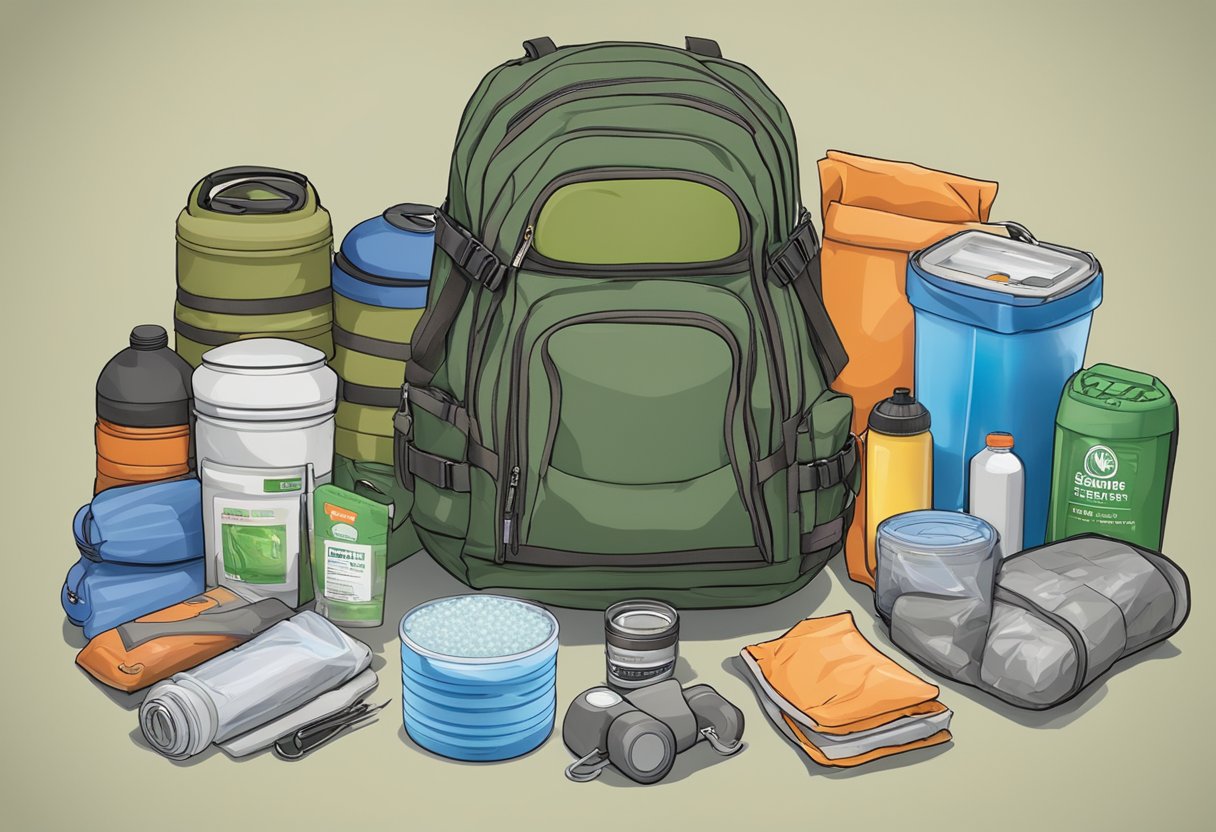
When it comes to preparing for TEOTWAWKI (The End Of The World As We Know It), having the right gear and supplies can make the difference between survival and hardship. Essential items like food, water, first aid supplies, and tools are crucial for any emergency scenario. Many survival experts also recommend having items such as iodine for water purification and rubbing alcohol for disinfecting wounds.
During such challenging times, physical activity often increases, requiring more calories than usual. This means stocking up on food that provides enough energy is vital. In addition to food and water, having versatile items like rubbing alcohol, which can also serve as a fire starter and ice pack, is invaluable.
Survival is not just about having the basics; it's also about being ready for various situations. Affordable, multi-purpose items can greatly enhance your preparedness without breaking the bank. By thinking creatively and planning ahead, you can build a well-rounded survival kit that addresses many potential needs.
Understanding SHTF and TEOTWAWKI
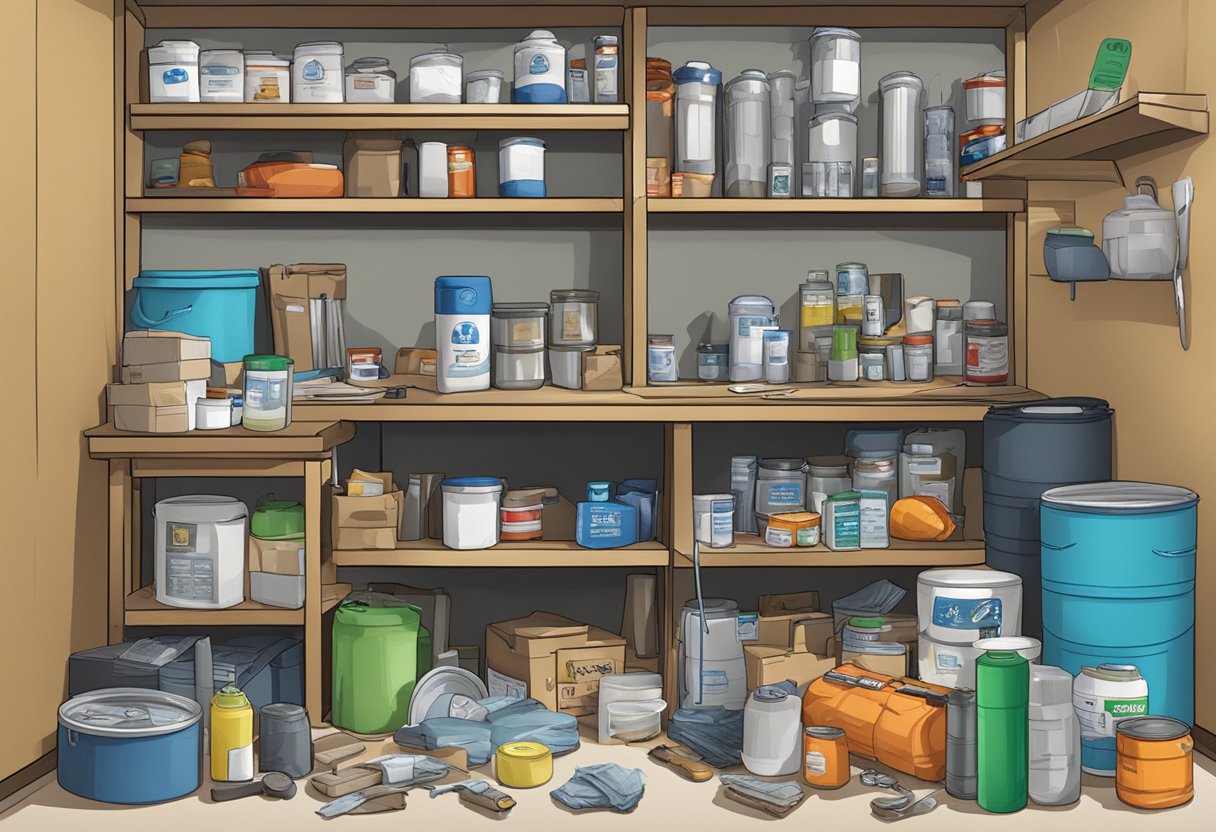
Planning for emergencies involves understanding terms like SHTF and TEOTWAWKI. These concepts are crucial for preparing for potential disasters and ensuring survival.
Defining the Terms
SHTF (Shit Hits The Fan) is a common acronym meaning a situation where everyday life is disrupted by a major disaster or crisis. This could be due to natural disasters like earthquakes or hurricanes, or human-made disruptions such as political unrest. The term signifies chaos, disorder, and the need for emergency preparedness.
TEOTWAWKI (The End Of The World As We Know It) is a more severe scenario. It refers to events that fundamentally change civilization, rendering previous ways of life obsolete. Scenarios include economic collapses or widespread social breakdowns. Preparing for TEOTWAWKI often involves long-term strategies and stockpiling essential supplies.
Historical Examples
Throughout history, there have been several SHTF situations. For instance, the Great Depression was an economic collapse that caused widespread hardship, requiring new survival strategies. Similarly, natural disasters like Hurricane Katrina showed the need for robust emergency plans.
TEOTWAWKI scenarios are less common, but potential examples include the fall of the Roman Empire, which led to major societal shifts. More recently, the COVID-19 pandemic disrupted global norms and emphasized the importance of being prepared for drastic changes to daily life.
Both terms highlight the importance of being ready for various disruptions, whether they last a few days or change civilization entirely.
Fundamentals of SHTF Planning
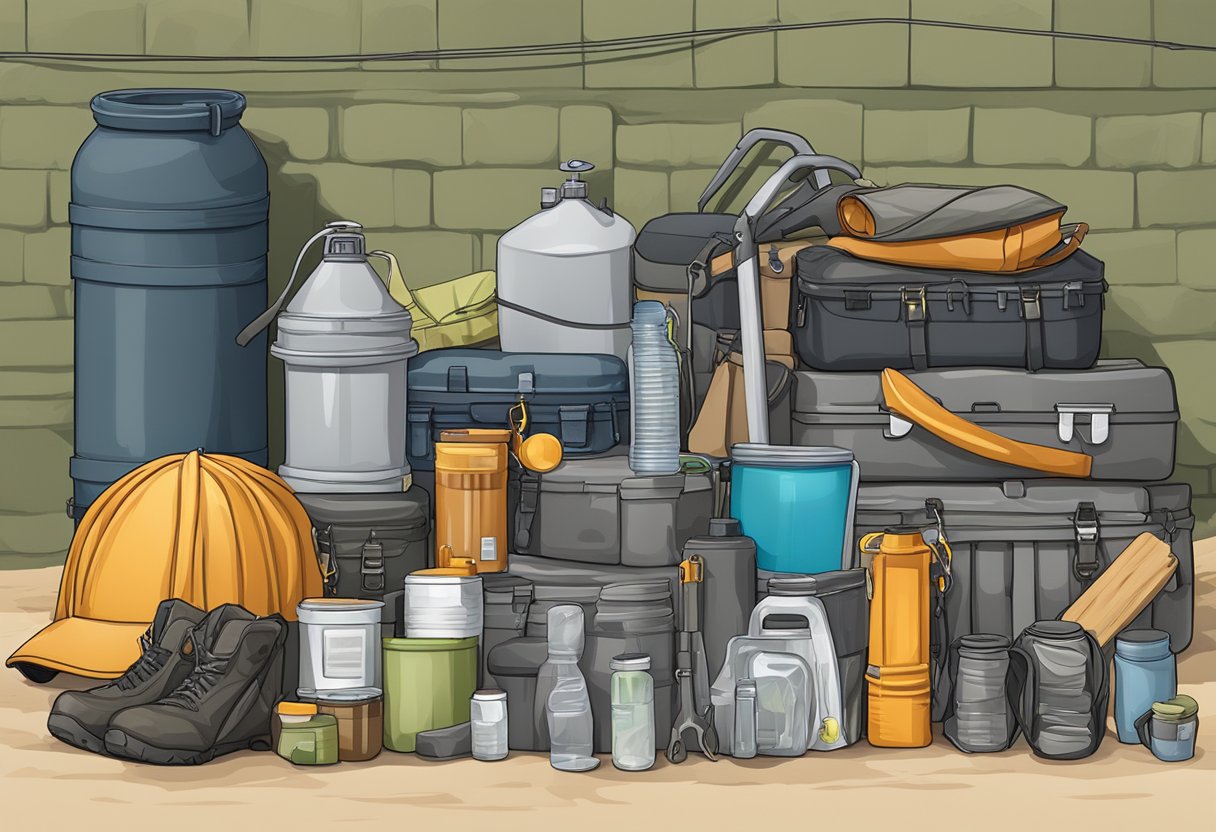
Planning for a SHTF scenario involves assessing your situation, managing risks, and setting clear survival goals. Understanding these basics helps you prepare effectively for emergencies.
Assessing Your Situation
The first step in SHTF planning is to evaluate your specific circumstances. Consider your location. Are you in an urban or rural area? Urban areas may have more resources but also more people competing for them.
Think about your personal and family needs. Do you need medication or special supplies? Assess your local climate and natural disasters common to your area. This information guides your preparations for food, water, shelter, and other essentials.
Risk Management and Mitigation
Identify the risks you face and how to reduce them. Start by making a list of possible emergencies, such as natural disasters, power outages, or civil unrest.
Next, develop strategies to mitigate these risks. For example, keep a well-stocked first aid kit for medical emergencies. Store ample water and non-perishable food. Ensure you have reliable communication tools like radios.
Plan for evacuation routes if you live in a disaster-prone area, and practice your emergency response plans regularly.
Setting Survival Goals
Establish clear, achievable goals for your survival strategy. Start with the Rule of 3: you can survive three hours without shelter, three days without water, and three weeks without food.
Aim to secure basic needs first: shelter, water, fire, and food. For shelter, know how to build or locate sturdy cover. For water, invest in purification systems.
Focus on acquiring skills and knowledge necessary for survival, such as first aid and navigation. Setting these goals keeps your prepping organized and effective.
These fundamentals lay the groundwork for a robust SHTF plan, ensuring you and your loved ones are ready when emergencies arise.
Water and Hydration
Access to clean water is vital during a crisis. Knowing how to find, purify, and store water can make a big difference in survival situations.
Securing Water Sources
Finding a reliable water source is essential. Natural sources like rivers, lakes, and streams are common, but be cautious as they can be contaminated.
Rainwater collection is another good method. Setting up barrels to collect rain can provide a steady supply.
In urban areas, look for sources like public fountains or even swimming pools in emergencies. It’s important to have multiple sources and to know where they are located.
Water Purification Techniques
Purifying water ensures it is safe to drink. Boiling water is one of the most effective methods to kill bacteria and viruses. Bringing water to a rolling boil for at least one minute will make it safe.
Water filters are handy for removing impurities and can be used on the go. Products like LifeStraw or portable pump filters can filter out harmful contaminants.
Bleach can be used as a chemical purifier. Using 8 drops of regular bleach per gallon of water, let it sit for 30 minutes before drinking. Water purification tablets are also effective and easy to carry, making them great for an emergency kit.
Water Storage Solutions
Storing clean water is just as important as securing and purifying it. Collapsible water containers are lightweight and easy to transport, making them ideal for emergency situations.
Water barrels and tanks can hold large amounts of water for long-term storage. Make sure these containers are food-grade and sanitized before use.
For portability, consider using CamelBaks or other hydration packs. These are convenient for carrying water while on the move. Always label containers with the date of storage and try to use the oldest stock first to keep water supply fresh.
Food and Nutrition
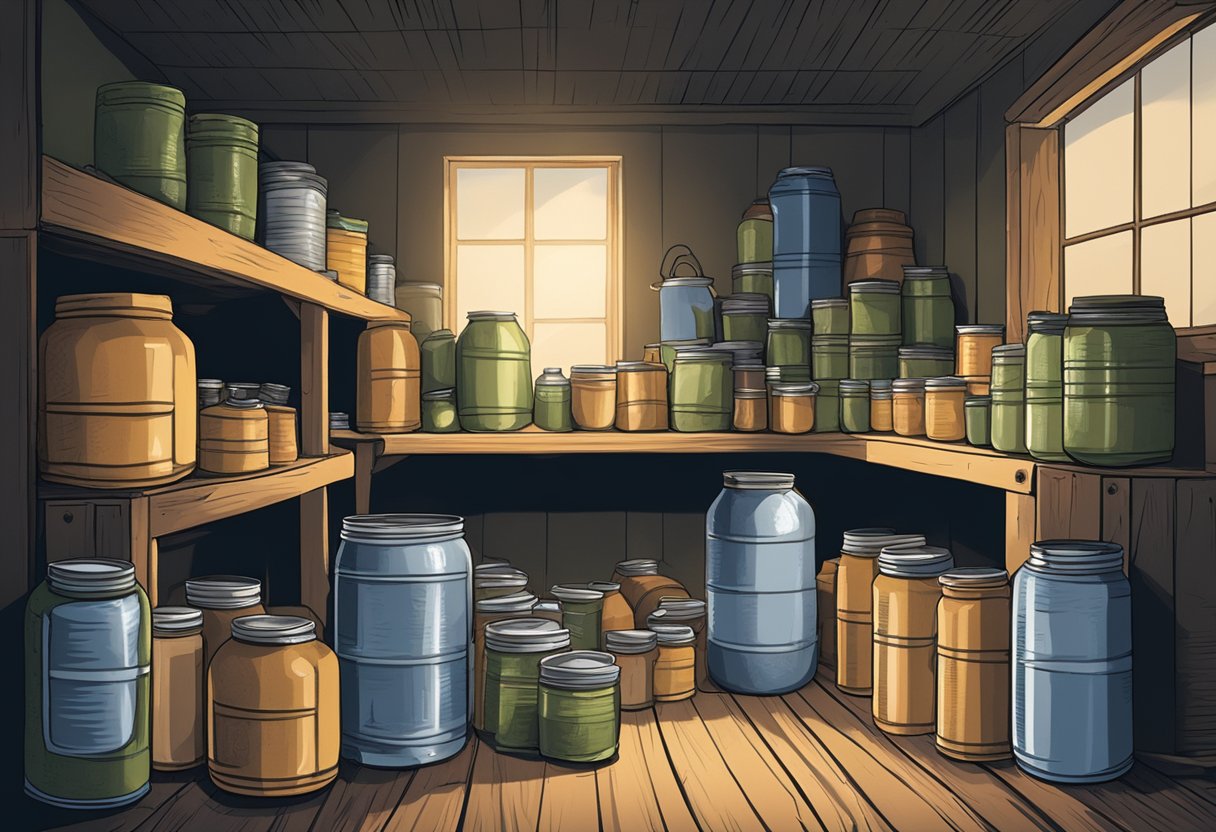
Ensuring proper food and nutrition during a SHTF scenario is crucial for survival. It involves stockpiling essential items, understanding food preservation techniques, and exploring sustainable food solutions.
Stockpiling Essentials
When preparing for a SHTF situation, it is vital to have a well-planned food stockpile. Start with staples like rice, beans, and pasta because they have long shelf lives and provide necessary carbohydrates. Canned goods are also valuable as they can last for years without refrigeration. Include a variety of vegetables, meats, and fruits to ensure a balanced diet.
MREs (Meals Ready-to-Eat) are another important item to consider. These are military-grade meals designed to be easy to prepare and nutritious. They typically contain around 1,200 to 1,500 calories each. Having a mix of high-calorie and nutrient-dense foods ensures energy and health.
Preservation and Shelf Life
Proper preservation techniques can extend the shelf life of perishable foods. Canning is one method that seals food in airtight containers to keep it safe for months or even years. Dehydration removes the moisture from foods, making them lighter and less prone to spoilage.
Freeze-drying is another effective technique. It involves freezing the food and then removing the frozen moisture in a vacuum. This process preserves the food's flavor and nutritional value. Vacuum-sealing can also be combined with other methods to keep dry goods like rice and beans fresh.
It's important to label everything with dates and rotate your stockpile regularly to use the oldest items first.
Sustainable Food Solutions
In addition to stockpiling, growing your own food provides a sustainable solution in long-term scenarios. Having a garden with vegetables like tomatoes, beans, and leafy greens can supply fresh produce. Planting fruit trees can also provide a reliable source of food over the years.
Raising small livestock, such as chickens for eggs or rabbits for meat, can further enhance food security. Chickens can provide a steady source of protein and don't require much space.
Foraging for wild edible plants and nuts can supplement your diet, though this requires knowledge of local flora to avoid poisonous plants. Combining these strategies helps ensure a stable food supply that can adapt to changing conditions.
Shelter and Protection
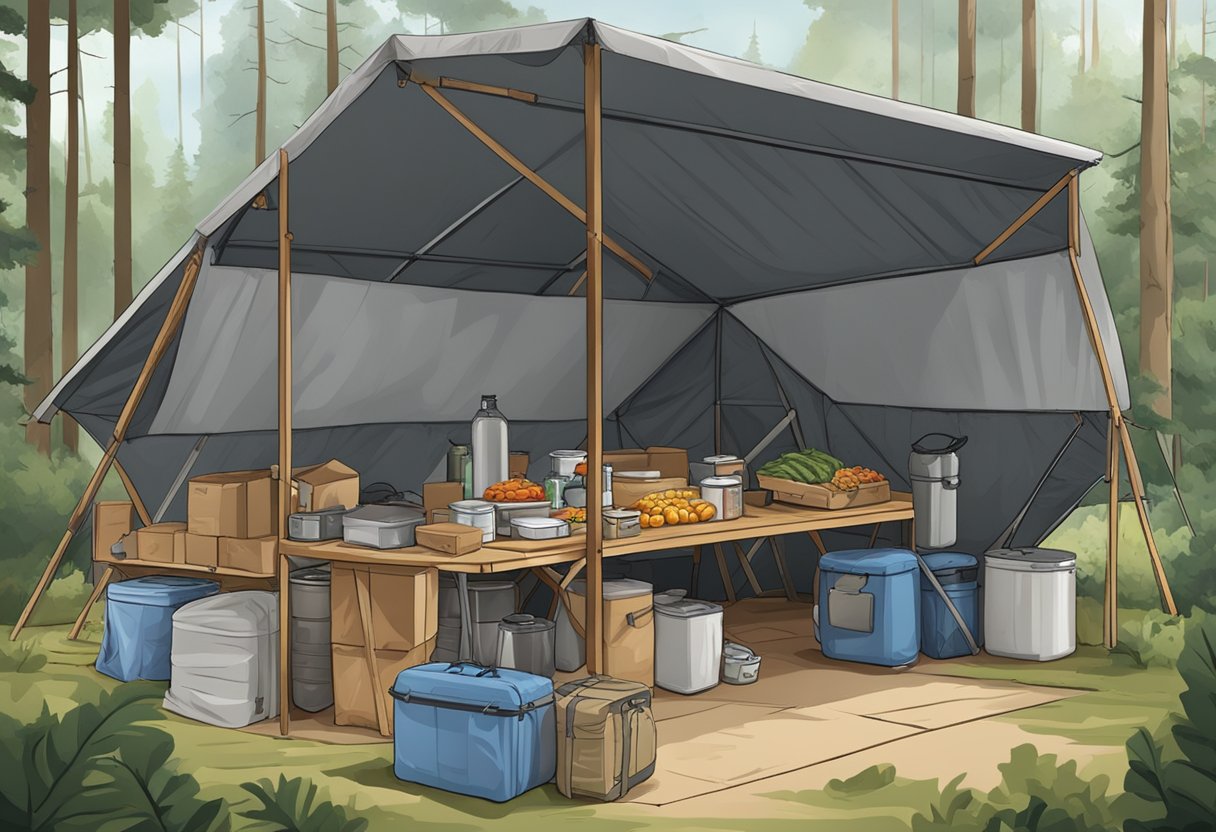
Finding a safe place and building a sturdy shelter are crucial during a crisis. This will provide protection from the elements and keep you secure from any threats.
Choosing a Safe Location
Picking the right location can make all the difference. Look for an area that is remote yet accessible. Being far from populated regions reduces the risks from other people. Consider natural barriers like hills or forests for extra cover.
Nearby water sources are essential, but avoid setting up too close to rivers or lakes to prevent flooding issues. Flat ground is ideal for building. Also, stay away from areas prone to landslides or heavy winds.
Constructing a Sturdy Shelter
Building a sturdy shelter requires a mix of materials and smart planning. Start with a solid foundation by clearing the ground. Rocks and fallen branches can be used for the base.
Use a tarp to create a waterproof layer, and collect enough leaves or debris to insulate. If available, a tent or sleeping bag adds extra protection and warmth. A bug-out bag often includes essentials like paracord for tying materials together.
Always ensure your shelter is well-camouflaged to avoid drawing attention. Proper ventilation is important for air quality but keep openings small to retain heat.
Security and Self-Defense
In a TEOTWAWKI scenario, securing your home and ensuring you have means for self-defense are critical. Here's a guide to help you understand the importance of firearms, non-lethal defense options, and strategic safety measures.
Firearms and Ammunition
Firearms are vital for protection and hunting. Popular choices include pistols, AR-15s, and shotguns.
- Pistols are compact and ideal for close-range defense.
- AR-15s offer versatility and excellent performance at varying distances.
- Shotguns provide powerful short-range defense and are easy to use.
Stockpile ammunition to ensure you don’t run out during critical moments. Secure your firearms and practice using them safely.
Non-Lethal Defense Options
Non-lethal options are great for situations where lethal force is not necessary.
- Pepper spray can incapacitate a threat temporarily.
- Tasers can disable an attacker for a short period.
- Batons offer a means of defense without causing permanent injury.
These options are useful when firearms aren’t suitable, like in close quarters or when legal restrictions apply.
Strategic Safety Measures
Strategic planning enhances overall safety. Reinforce entry points such as doors and windows to deter intruders. Use security cameras and motion sensors to monitor the surroundings. Build a safe room equipped with essentials like food, water, first aid kits, and communication devices. Develop an evacuation plan that includes multiple escape routes.
Taking these steps helps you stay prepared and improves the likelihood of surviving a crisis.
First Aid and Medical Preparedness
Being ready for medical emergencies in a survival scenario is crucial. Proper first aid and medical supplies can bridge the gap until professional help is available, and may even save lives.
Building Your First Aid Kit
Every household should have a comprehensive first aid kit. A family-size kit and individual kits for each member are highly recommended. Essential items include:
- Gauze and bandages for wound care
- Tourniquets for severe bleeding
- Antiseptic wipes for cleaning wounds
- Over-the-counter medications like aspirin and Tylenol
A good kit also contains specialty items like blood stop powder and emergency blankets. It's important to regularly check and restock these kits to ensure they are ready when needed.
Handling Common Injuries
In a survival scenario, common injuries like cuts, burns, and breaks can occur. For minor wounds, clean with antiseptic wipes and cover with sterile gauze and bandages. Burns should be cooled with water and covered loosely with clean, non-stick dressings.
For more serious injuries like fractures, make splints from available materials to immobilize the affected area. Managing severe bleeding quickly using a tourniquet or applying direct pressure is vital. Always aim to stabilize the injury and seek professional medical help as soon as possible.
Long-Term Health Management
Taking care of long-term health issues in a survival situation requires pharmaceuticals and regular medical supplies. Stockpiling necessary medications is essential. Individuals with chronic conditions like diabetes must have an adequate supply of their prescriptions.
Maintaining a balanced diet is also crucial for long-term health. Vitamins and supplements can help prevent nutrient deficiencies. Regular check-ups and medical knowledge are essential for managing conditions and preparing for any possible scenarios. Consider having books or guides on basic medical procedures and first aid.
Tools and Equipment
Having the right tools and equipment is crucial for survival. Below are the most essential gear and tips on how to maintain and use them effectively.
Essential Gear to Have
A multitool is a must-have. It combines several functions like pliers, screwdrivers, and knives. It's compact and versatile, making it useful in various situations.
Knives are another critical tool. A sturdy fixed-blade knife can help with cutting rope, food preparation, and self-defense. Folding knives are more portable but ensure they are strong and reliable.
Rope is invaluable. It can be used for shelter building, securing goods, or even rescuing someone. Paracord is a favorite due to its strength and versatility.
Matches and lighters provide the ability to start fires for cooking and warmth. Stock up on waterproof matches and durable lighters.
A tactical flashlight is necessary. Choose a model that's bright, durable, and has a long battery life. Flashlights with adjustable beams or strobe functions can be particularly beneficial.
Maintenance and Usage Tips
Keep your multitool clean and dry to prevent rust. Lubricate its moving parts regularly to keep it functioning smoothly.
Clean and sharpen your knives often. A dull knife is more dangerous than a sharp one because it requires more force to use. Store knives in a dry, safe place to avoid rust and damage.
For rope, store it away from direct sunlight to prevent weakening. Check it regularly for fraying or damage, and replace it if necessary.
Matches and lighters should be kept dry. Store them in waterproof containers and test them periodically to make sure they work. Rotate older stock out for fresh supplies.
Ensure your tactical flashlight has fresh batteries and consider carrying spares. Check its functionality monthly. LED bulbs are a better choice because they last longer and use less battery power.
Communication and Signaling
Effective communication and signaling are crucial during a SHTF (Sh*t Hits The Fan) scenario. Reliable ways to stay informed and alert emergency services can make a significant difference in survival.
Staying Informed
Staying aware of changing situations can be life-saving. Radios are essential for this. Battery-powered or hand-cranked radios can pick up emergency broadcasts and weather updates even when power and internet are down.
Two-way radios allow communication with others in your group up to several miles away. Channels like FRS (Family Radio Service) and GMRS (General Mobile Radio Service) are common. These are useful for coordinating movements and exchanging important information.
For long-range needs, consider HAM radios. While these require a license to operate legally, they provide greater range and are more reliable in remote areas. HAM radios can connect with global networks, making it easier to hear about broader events and coordinate with other groups.
Emergency Signaling Devices
In emergencies, signaling devices can alert rescuers or others to your location. Whistles are simple yet effective. A whistle can be heard much farther than a human voice, especially in noisy environments.
Signal mirrors are useful for daytime emergencies. They can reflect sunlight up to 20 miles, catching the attention of aircraft or distant observers. It’s essential to practice using a signal mirror to aim it correctly.
Flares are vital for nighttime signaling or when visibility is poor. Handheld flares are visible for miles and can be life-saving if you're injured or trapped.
For more advanced options, consider an emergency beacon like a Personal Locator Beacon (PLB). These devices transmit a distress signal with your location via satellite, which can be picked up by rescue teams. They’re particularly valuable in remote areas where other forms of communication might not work.
Use these tools wisely and ensure you know how to operate them before an emergency occurs.
Power and Energy Solutions
Survival in a TEOTWAWKI situation requires dependable power and energy solutions. Key solutions include solar power systems, which can provide a reliable and renewable source of energy, and alternative energy options that can complement your power needs.
Solar Power Systems
Solar power systems are essential for maintaining a sustainable and reliable power source. Solar panels can convert sunlight into electricity, providing energy for lighting, heating, and essential devices. Batteries are important in these systems to store energy for use during cloudy days or nighttime.
A typical setup includes solar panels, charge controllers, inverters, and batteries. Panels should be placed in direct sunlight for maximum efficiency. The energy collected is stored in deep cycle batteries and converted to usable electricity with inverters.
Maintaining the system is crucial; panels must be kept clean, and batteries should be checked regularly. Portable solar chargers are also useful for small devices, ensuring that communication and navigation tools remain functional.
Alternative Energy Options
In addition to solar power, other energy sources can diversify and stabilize your power setup. Wind turbines can generate electricity when solar power is insufficient. These are particularly useful in windy regions and can operate day or night.
Hydropower is another robust option if you have access to flowing water. Small water turbines can generate steady power, especially useful for remote locations.
Generators, especially those that run on renewable fuels, can provide backup. Biodiesel or alcohol-fueled generators are less reliant on traditional fuel sources. Always have multiple energy sources to ensure consistent power and reduce dependency on any single method.
Balancing different energy solutions ensures a reliable power supply, essential for staying safe and comfortable during prolonged emergencies.
Clothing and Personal Gear
Proper clothing and personal gear are crucial for survival. This includes items for various weather conditions and functional accessories that make survival tasks easier.
Dressing for Survival Situations
In survival situations, having the right clothing is essential. Layers are critical because they allow for adjusting to different temperatures. Base layers should include moisture-wicking shirts and long underwear to keep the skin dry. Middle layers like fleece or insulated jackets provide warmth. Outer layers should be waterproof and windproof, such as rain jackets and pants.
Footwear is also vital. Hiking boots are recommended because they offer support and durability. Look for ones that are waterproof and have good traction. Don't forget socks that prevent blisters and provide warmth in colder climates.
For cold environments, items like insulated gloves, hats, and thermal underwear are needed. In hot climates, consider breathable fabrics, sun hats, and lightweight but durable pants and shirts. Always have a combination of clothing prepared for unexpected weather changes.
Functional Accessories
Functional accessories can make a significant difference in survival scenarios. Belts and hats are simple yet useful; belts hold essential tools, while hats protect from the sun.
Gloves are also necessary, with different types serving different purposes. Work gloves protect hands during manual tasks, while insulated gloves keep hands warm in cold conditions.
A multi-tool or a small stainless steel knife is indispensable for tasks like cutting rope, preparing food, and self-defense. Headlamps or small flashlights ensure visibility in low-light conditions and can be crucial during night-time activities or emergencies.
Smaller items like bandanas, which can be used for multiple purposes such as filtering water or providing sun protection, are also valuable. Make sure every piece of gear is lightweight and portable, as carrying heavy items can be a burden.
Having the right clothing and personal gear is not just about comfort but can be a matter of survival. Make sure to choose items that are versatile and suited to various conditions.
Survival Skills and Knowledge
Mastering essential survival skills and obtaining relevant knowledge are crucial for weathering TEOTWAWKI. Developing these abilities will ensure you can navigate and endure unexpected challenges effectively.
Fundamental Skills to Master
To thrive in a TEOTWAWKI scenario, acquiring several key survival skills is vital. Fire-starting is essential for warmth, cooking, and safety. Learn to start a fire using different methods like flint and steel, and natural tinder.
Shelter-building is crucial for protection against the elements. Understand how to construct various types of shelters using materials like tarps, branches, and leaves.
Water purification skills are necessary. Knowing how to find, purify, and store water can prevent life-threatening dehydration and illness. Methods include boiling, chemical treatment, and filtration.
First aid knowledge is another must. Learn to treat wounds, prevent infections, and handle basic medical emergencies. Consider taking a certified first aid course for practical experience.
Acquiring and Sharing Knowledge
Knowledge can be a lifesaver. Start by reading books on survival. Titles like "SAS Survival Handbook" and "Bushcraft 101" offer extensive guidance. Building a library of survival literature ensures access to invaluable information when digital resources may be unavailable.
Joining survival groups or forums can help in exchanging expertise and advice on various topics. Participating in local prepper communities allows you to attend workshops and training sessions with like-minded individuals.
Hands-on practice is essential. Regularly practice skills like gardening, foraging, and hunting. Sharing your skills with family and friends creates a reliable support system. Knowledge transfer ensures everyone is prepared to handle various scenarios effectively.
Economic Considerations
In an SHTF scenario, traditional money may lose its value, making bartering and alternative currencies essential for survival. Understanding these economic considerations can help you prepare for effective trade and resource management.
Bartering and Trade
Bartering becomes crucial when cash is no longer useful. Items with high usefulness, such as food, medical supplies, and tools, become valuable trade goods. Practical skills like first aid or mechanics can also be bartered.
Think about what you can trade: fuel, water, sanitation products, and essential medications. Keep items small and easily transportable.
Popular barter items include:
- Food: Canned goods, dried foods, and protein bars.
- Medical supplies: Bandages, iodine, and alcohol wipes.
- Tools: Multi-tools, knives, and fire starters.
- Fuel: Small containers of gas or propane.
Precious Metals and Alternative Currencies
When traditional currency fails, people often turn to precious metals like gold and silver. These metals have intrinsic value and are recognized worldwide. Small denominations of gold and silver coins can be stored and traded easily.
Benefits of precious metals:
- Durability: Gold and silver don’t corrode or decay.
- Portability: Coins and small bars are easy to transport.
- Universal value: Recognized globally as valuable.
Other possible currencies:
- Cryptocurrencies: Digital money could become useful if the internet remains accessible.
- Trade goods: Items like ammunition or alcohol can serve as alternative currencies due to their high demand.
Psychological and Social Factors
Surviving TEOTWAWKI requires not just physical preparedness but also strong mental and social resilience. Maintaining mental health and building supportive communities are key aspects to consider.
Maintaining Morale and Mental Health
In a survival situation, maintaining mental health is as important as having enough food and water. Stress, fear, and anxiety are common. Simple activities like reading, listening to music, or engaging in hobbies can help mitigate negative emotions.
Regular exercise and healthy eating should be prioritized to ensure both physical and mental well-being. Sleep is crucial; ensure everyone gets adequate rest even if conditions are tough. Positive reinforcements and setting small achievable goals can keep morale high.
Friends and family play a crucial role in maintaining a positive mindset. Sharing stories, singing songs, or playing games can uplift spirits and provide necessary mental breaks.
Building a Supportive Community
A strong community can be the difference between survival and failure. It's essential to build trust within the group. Clear communication and well-defined roles help ensure everyone knows their responsibilities, reducing confusion and conflict.
Encourage collaboration over competition. Share resources like food and water fairly. Group activities like group meals or community meetings can strengthen bonds and build a sense of unity.
Inclusion is important; ensure that everyone feels heard and valued. Establishing a support system where members can talk about their fears or problems provides emotional relief and builds resilience within the community.
Special Considerations
Preparing for emergencies involves planning for everyone in your household. It's crucial to include specific needs for pets, children, and individuals with special requirements.
Preparing for Pets and Children
Pets: Pets require their own supplies to stay healthy and safe. Stock up on pet food, water, medications, and a first aid kit. Keep extra leashes, collars, and identification tags. Make sure you have a plan to transport them safely, which may include pet carriers for smaller animals.
Children: For children, consider their specific needs such as formula, diapers, and snacks. Pack comfort items like favorite toys or books to help keep them calm. First aid kits should include child-sized supplies, and extra clothing should be packed for various weather conditions.
Addressing Special Needs
Medical Needs: Individuals with special needs may require extra medications and medical supplies. Ensure there is a reliable way to refrigerate medications if necessary. Create a detailed medical history document including contact information for healthcare providers.
Mobility and Communication: For those with mobility issues, plan for transport and have extra batteries or charging options for mobility devices. For those with communication challenges, prepare simple communication aids or devices.
Women: Include items for menstrual hygiene and any specific health needs. Comfort items can also be important if someone is pregnant or breastfeeding.
By tailoring your emergency preparations to include these special considerations, you can ensure that everyone in your household stays safe and well-prepared.



